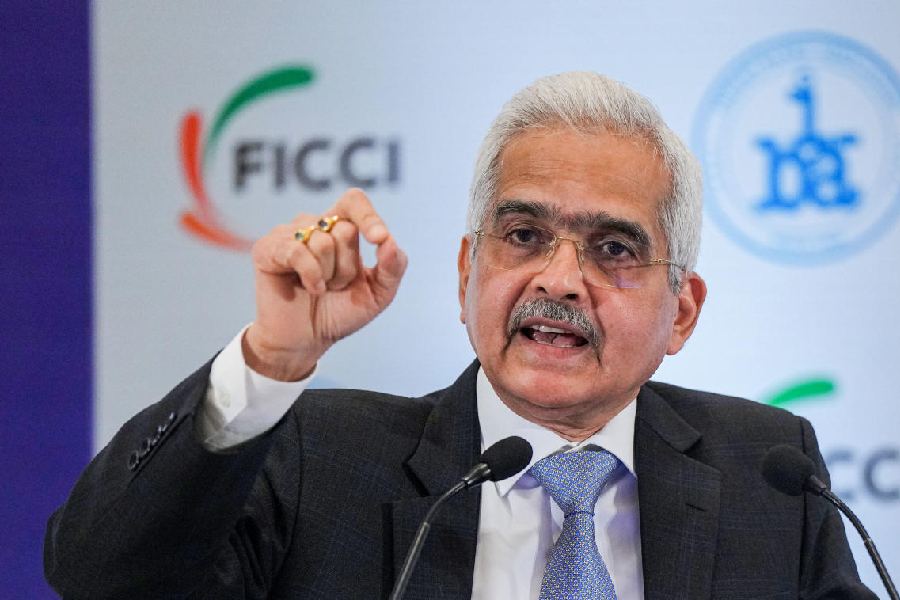Reserve Bank of India (RBI) governor Shaktikanta Das on Wednesday asked banks to avoid exuberance while lending even as he flagged the possibility of “contagion risk” in the interconnectedness between banks and non-banking finance companies (NBFCs).
The central bank last week increased the risk weights on unsecured consumer loans and credit card exposure of banks and NBFCs while raising the capital that banks must set aside in their NBFC loans.
Addressing the “FIBAC 2023 Conference” organised jointly by Ficci and the IBA here, Das said the clampdown on unsecured loans and credit cards was a “preemptive’’ move aimed at sustainability.
The RBI targeted only certain segments with high growth rates that posed potential risks.
“We have also very recently announced a few macro-prudential measures in the overall interest of sustainability. These measures are pre-emptive in nature. They are calibrated and targeted,’’ Das said.
The banking regulator is presently focused on strengthening governance, ensuring effective risk management and robust lending practices.
Banks, NBFCs and other financial entities must continue to stress test their books, Das said. Even companies in the real estate sector should do likewise.
“At the current juncture there may not be any immediate cause for worry, but to remain on top of things, banks and NBFCs would be well advised to take certain precautionary measures.’’
He asked lenders to strengthen their risk management practices and build additional buffers.
Though banks and NBFCs are doing well, they should utilise such good times to reflect on potential risks.
Banks and NBFCs should take due care to ensure credit growth at the overall, sectoral and sub-sectoral levels. Das also asked the lenders to curb all forms of exuberance.
Banks need to price loans in sync with their envisaged risks and strengthen their asset liability management. ``They may give greater attention to their liabilities side. In certain cases, we have observed increased reliance on high-cost short-term bulk deposits while the tenure of the loans, both in retail and corporate loans, is getting elongated,’’ he said.
The RBI is deeply concerned over the high exposure of banks to NBFCs. Pointing out that the increasing interconnectedness between banks and non-banks merits close attention, Das said the shadow banks are large net borrowers of funds from the financial system, with their exposure from banks being the highest.
Banks are also one of the key subscribers to the debentures and commercial papers issued by NBFCs even as they maintain borrowing relationships with multiple banks.
“Needless to state that such concentrated linkages may create a contagion risk. Though the banks are well-capitalised, they must constantly evaluate their exposure to NBFCs and the exposure of individual NBFCs to multiple banks. The NBFCs on their part should focus on broad basing their funding sources,’’ Das said.










